Paratexts Seeking Understanding
Paratexts are the features of all literature that extend beyond the main text itself, including items like marginalia, titles, cross-reference systems, artworks and illuminations, and lists, and they are the first items that supplement the ancient religious texts. Paratexts are ubiquitous, but hidden in plain sight. Funded by the Templeton Religion Trust, this project uses paratexts to test how religious manuscripts create knowledge and understanding through philological research and empirical study, leveraging the complex paratexts found in the manuscripts of Jewish, Christian, Islamic, and Buddhist texts. Revolving around the world-renowned manuscript collection of the Chester Beatty in Dublin, we empower eight teams of philologists to carry out work on multiple manuscript cultures, using the paratexts as vectors to test hypotheses on the role and function of aesthetic paratexts in perception and cognition, the nexus between paratexts and interpretation, and paratexts as graphic forms of knowledge production. Put simply: experts in religious manuscripts work with our scientific team to craft empirical/experimental studies that test the assumptions of aesthetic cognitivism and the functions of paratexts.
Our Guiding Questions
Research in our project, both the empirical and philological approaches, revolve around five guiding questions:
- Can the assertions of theologians and philologists regarding the function and significance of various kinds of paratexts in religious literature be tested using the tools of cognitive psychology?
-
Which forms of paratexts (images, layout, commentary, segmentation, titles, etc.) are optimal for instilling knowledge, understanding, and/or aesthetic appreciation?
-
Does a higher aesthetic valuation of paratexts improve their ability to impart knowledge? Is perceived beauty a factor in knowledge acquisition?
-
How do expert and novice readers differ in their perception of paratexts? Do these differences impact the ability of paratexts to impart knowledge?
- How are textual and paratextual features integrated into artwork appreciation in “real time” as people view the work? In short: how does the presence or absence of paratexts alter artwork appreciation and the encoding of knowledge?
Project Leaderships Team
Dr Garrick Allen
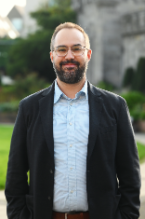
Senior Lecturer in New Testament Studies
After completing my PhD at the University of St Andrews (2015), I worked as a postdoctoral researcher on ECM-Apk project at the Kirchliche Hochschule Wuppertal/Bethel, where I contributed to the production of a new Greek critical edition of the book of Revelation. From 2016 to 2020 I was Associate Professor in New Testament Studies at Dublin City University. And since 2020 I am Senior Lecturer in the School of Critical Studies at the University of Glasgow.
My first book, The Book of Revelation and Early Jewish Textual Culture (Cambridge 2017), was awarded the Manfred Lautenschlaeger Award for Theological Promise 2019 and my essay "Monks, Manuscripts, Muhammad, and Digital Editions of the New Testament," published also in a chapter in my book Manuscripts of the Book of Revelation (Oxford 2020), was awarded the Paul J. Achtemeier Award for New Testament Scholarship by the Society of Biblical Literature (2018).
Dr Christoph Scheepers
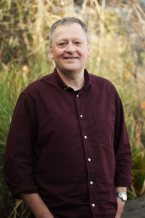
Senior Lecturer in Cognitive Psychology
Dr Scheepers obtained his psychology degree at the University of Bochum in 1991, and his PhD at the University of Freiburg in 1997. He held a two-year post-doc position at the University of Glasgow (1998-2000) before starting a C1 assistant professorship in computational linguistics at the University of Saarbruecken (2000-2003.). He then held a lectureship in psychology at the University of Dundee (2003-2005) before moving to Glasgow in October 2005 where he currently holds a senior lecturer position. His main research areas are psycholinguistics and the psychology of language. He employs various brain-imaging and behavioural methods, including the recording of eye-movements during reading and linguistically aided scene perception (visual-world paradigm). Dr Scheepers is editorial board member for JEP:General, Cognition, Frontiers in Language Sciences and Collabra.
Dr Kelsie Rodenbiker
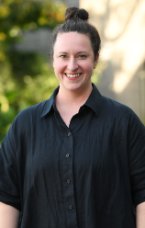
Research Associate in Biblical Studies
I completed my PhD at Durham University in 2021. I argued in my doctoral thesis that authorial attribution to significant apostolic figures and the use of exemplary figures from the Jewish scriptural past are both aspects of the ancient literary-rhetorical strategy of exemplarity, the use of a prestigious figure from the past as a model for the present and future. The use of the authorial apostolic pseudonyms of James, Peter, John, and Jude as well as the illustrative scriptural exempla shape the canonical reception of the Catholic Epistle collection.
At present I work as a postdoctoral researcher on the European Research Council-funded Titles in the New Testament project. My current streams of research focus on questions of canon and literary reuse, especially concerning pseudepigraphy, the use of scriptural figures, and manuscripts and scribal cultures. I lecture and present regularly on the Catholic Epistles, canon and the canonical process, apocrypha and the ancient perception of pseudepigraphy, and the relationship between Jewish tradition and early Christian literature.
I am currently a Fellow of the Centre for Advanced Studies, “Beyond Canon,” at the University of Regensburg; I am a chair of the Later Epistles seminar of the British New Testament Society; and I co-convene the University of Glasgow Biblical Interpretation and Theology seminar.
Project Scientific Team
Dr Alejandro Bahena-Rivera
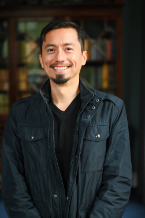
Dr Alejandro Bahena-Rivera's PhD research analysed psychosocial outcomes associated with fear of crime and victimisation. He has gained experience in quantitative and qualitative methods through projects on aesthetics, place-making and clinical interventions in the UK and Mexico. His research revolves around using mixed methods to understand the psychological impact of art and ancient manuscripts.
Mirza Muchammad Iqbal

I completed my master’s degree in Research Methods of Psychological Science at the University of Glasgow in 2021. My research interest lies in cognitive psychology, particularly exploring cognitive biases and belief-related perceptions through experimental approaches. Using psychometrics and several statistical techniques, I am currently a Research Assistant at the School of Psychology and Neuroscience, working with Dr Christoph Scheepers on the 'Paratext Seeking Understanding' research projects.
Xuanyi Ma

I gained a Bachelor’s degree (BSc) and a Master’s degree (MSc) in Psychology as well as a Master’s degree (MA) in Music Education. I have just completed my PhD in Psychology of Music at the Department of Culture, Communication and Media, Institute of Education, University College London in September, 2023. My doctoral study is about the initial establishment of a novel approach for real-time psycho-physiological and emotional response measurement with findings from a small-scale empirical study on sad erhu music, and its compatible analytical framework.
Subgrantees and their Projects
(1) Jill Unkel, Words are Not Enough

Curator of the Western Collection, The Chester Beatty, Dublin, Ireland
Her project unites museum and academic experts in the fields of philology and experimental sciences. Each of the subprojects explores the paratextuality of a particular manuscript culture represented in the Chester Beatty collections (Jewish, Christian, Islamic, Buddhist). Within these traditions, philological researchers conduct empirical experiments to explore the links between paratexts and understanding. The project will culminate in the transformation of the museum’s special exhibition gallery into a curated experimental space, Words are not Enough. The series of quantitative experiments in a public context addresses the questions and hypotheses posed by each sub-grantee working with their chosen manuscript culture(s).
(2) Elvira Martín-Contreras, Understanding Paratexts of the Hebrew Bible
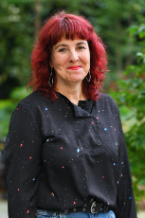
Scientific Researcher at the Institute of Languages and Cultures of the Mediterranean and the Near East (ILC-CSIC), Madrid, Spain.
Her project studies of the role and impact of paratextual elements in reading, understanding, interpreting, and learning the Hebrew Bible. The project has two main objectives: to examine the relationship between the biblical text and the Masora annotations and to investigate the interaction between the Masora and other paratextual elements when they coexist in the margins of the manuscript. Overall, this project aims to uncover the intricate relationship between the biblical text and paratextual elements in Hebrew Bible manuscripts.
(3) Francis Watson, Text, Format, and Reader
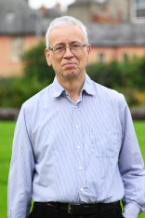
Research Chair in Early Christian Literature at Durham University, UK
His project sets out from the fact that the same text can be formatted in very different ways, and it addresses the question how these formatting differences affect the reader’s experience. This question is addressed to the text we know as “the Bible”, which originally circulated not as a complete volume but as separate manuscripts of individual books or sub-collections. The project explore the effects of the transition from individual books to “the Bible” by exploring papyrus manuscripts of the New Testament at the Chester Beatty and the 8th century Codex Amiatinus – the oldest intact single-volume Bible in any language, preserved in Italy but created in the monastery of Wearmouth and Jarrow, made famous by the Venerable Bede.
(4) Stefan Schorch, Harmful or Helpful Holiness: The impact of paratexts on reading perception in the Samaritan manuscript culture
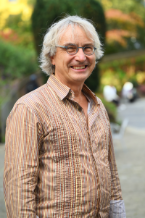
Professor of Hebrew Bible and Ancient Judaism at Martin-Luther-University Halle–Wittenberg, Germany
This project analyses the impact of paratexts on the perception of Pentateuch manuscripts and on their reading within the Samaritan culture. The Samaritan manuscript culture is ancient, but still alive and has been preserved within the Samaritan community until today. Literary and visual artwork is an extremely common feature in these manuscripts, but its function and impact has not been determined. The fact that these paratexts generally diminish the readability of the manuscript rather than improving it demonstrates that they do not serve to make the written record more accessible. Preliminary studies suggest that instead, the paratexts are crucial for creating the experience of a holy text, linking the reader to the historical depth and the actual meaning of its transmission within the community, and increasing its appreciation.
(5) Dorji Wangchuk, In and Around Tibetan Buddhist Texts: A Historical-Philological-Empirical Study of Tibetan Buddhist Paratextology
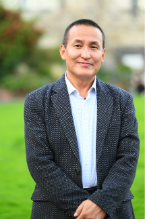
Professor for Tibetology at the Department of Indian and Tibetan Studies, Asien-Afrika-Institut, Faculty of Humanities, Universität Hamburg, Germany
His project investigates the phenomena of Tibetan Buddhist paratexts from historical, philological, and empirical perspectives, focusing on the Tibetan texts in the Chester Beatty collection. Some of the key research questions are what the nature and function of paratexts in the Tibetan Buddhist textual tradition are; how the phenomena of paratexts evolved and developed in the Tibetan Buddhist cultural sphere; and whether some of the functions ascribed to Tibetan Buddhist paratexts can be corroborated empirically.
(6) Asma Helali, Words Upon Words: The Paratext in the Islamic manuscript tradition
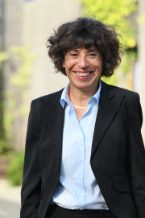
Maitresse de conférences of Islamic studies at the University of Lille, France
Her project examines the forms, functions, and cognitive values of the paratexts in the Islamic manuscript tradition, focusing on Arabic manuscripts the Chester Beatty library and Arabic texts on variant readings of the Qur’an, like The Book of Beauty. Dr Helali suggests that the paratext is a multi-layered, mobile fragments whose display and flow on the page plays a crucial role in its reception by the reader. In other words, paratexts are central to understanding the Qur’an and its transmission.
(7) Matthew Keegan, Paratextual Prestige and the Social Life of Islamic Scholarly Manuscripts
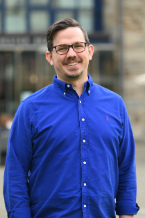
Moinian Assistant Professor of Asian and Middle Eastern Cultures at Barnard College of Columbia University, USA
His project explores how Muslim scholars in the 12th and 13th centuries added paratextual elements to the texts that they read. These included notes attesting to students reading the text with a teacher, transforming a manuscript into a social document. Dr. Keegan is examining a 12th-century copy of a 10th-century work entitled The Exegesis of Rare Words in the Quran, in which one of the attested students was Saladin’s nephew, who was both a prince and a scholar. The size, spacing, and placement of paratexts attesting to who read and interacted with this manuscript will help shed light on the aesthetic dimension of philological practices.
(8) Stephen Carlson and Jonathan Zecher, Scholia Seeking Understanding: Reader Competence and Reading Culture
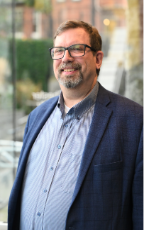

Stephen C. Carlson is Associate Professor in Biblical and Early Christian studies at the Institute for Religion and Critical Inquiry at Australia Catholic University, Melbourne, Australia.
Jonathan Zecher is Senior Research Fellow in Biblical and Early Christian studies at the Institute for Religion and Critical Inquiry at Australia Catholic University, Melbourne, Australia.
Their project investigates the marginal notes and commentary (“scholia”) that surround the main text in Byzantine Greek manuscripts. Rather like modern footnotes, scholia are meant to clarify difficulties, expand meanings, and invite reflection on texts. But the aesthetics do not always seem to help. Sometimes the frame commentary script is so tiny, abbreviated, and unfamiliar that it seems to frustrate the unaided reader. To assess the cognitive effects of relatively inaccessible paratexts upon readers of different competencies, this subproject investigates miniature scholia in manuscripts of the Gospels and Pseudo-Dionysius in Paris and Dublin. Through empirical study in collaboration with the scientific team, we seek to determine the cognitive and philological functions of the aesthetics of Byzantine frame scholia and hope to contribute to a better understanding of the cognitive effects of scholia, improve scholarly editions, enhance museum exhibitions, and enrich readers’ experiences of both ancient and modern books today.
Advisory Board
Prof Dr Martin Fischer
Cognitive Sciences, University of Potsdam
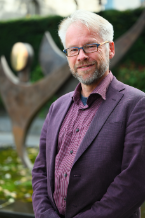
After my undergraduate Psychology degree from RWTH Aachen/Germany, I worked in Massachusetts from 1991-1996, where I investigated eye and body movements and their effects on spatial attention to obtain a PhD. After 3 years as postdoc at Ludwig-Maximilians-University in Munich, I moved to University of Dundee. There, I worked for 12 years on various interdisciplinary topics, such as poetry reception, humanoid robots and numerical cognition, before becoming Full Professor of Cognitive Sciences at the University of Potsdam in 2011. My current research focus is on embodied cognition.
Dr Bo Yao
Senior Lecturer in Psychology, University of Lancaster
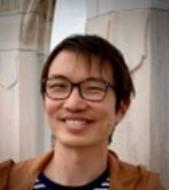
Dr Bo Yao is a cognitive neuroscientist at Lancaster University, UK. His research interests include language, embodied cognition, and consciousness. His current work focuses on neurocognitive mechanisms of inner speech and verbal hallucinations, abstract conceptual processing, discourse reading, and bilingual processing. His research incorporates diverse methods such as behavioural analysis, EEG, fMRI, eye tracking, neurostimulation and computational modelling.
Sinead McCartan
Head of Collections, The Chester Beatty
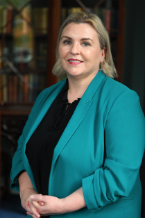
Sinéad McCartan is the Head of Collections at the Chester Beatty, Dublin – a museum that is celebrated as one of the best in Europe. Since taking up the post in 2021, Sinéad has developed an approach for the museum on the history of its collections, championed the role of education as an integral part of the museum’s activities, ensured the museum has retain its accreditation status within the Museum Standards Programme for Ireland, overseen access and visitors audits to deepen the museum’s understanding of its visitors and requirements around equality, diversity and inclusion. Prior to joining the Chester Beatty, Ms McCartan was Director of the Northern Ireland Museums Council supporting 40 local museums across Northern Ireland and worked closely with the Historic Environment Division (Department of Communities) encouraging positive and creative use of the historic environment. Between 2008 and 2017, as Head of Collections Research and Interpretation at National Museums Northern Ireland, Sinéad had responsibility for six curatorial divisions and exhibition planning across for museum sites. Prior to moving into museum management, Sinéad was curator of Prehistoric Antiquities at the Ulster Museum in Belfast.
Dr Dominic Thompson
Associate Professor in Psycholinguistics, University of Nottingham

After completing my PhD in Psychology at the Institute of Neuroscience and Psychology, University of Glasgow, I moved to the University of Nottingham in 2014 where I now teach and research in psychology, psychophysiology, and language.
I'm interested in how language and emotion affect each other, as well as the ways we enhance meaning in digital communication such as with emojis and other creative features. To investigate these, I use methodologies from psychology and psycholinguistics - including EDA, EMG, EEG, and eye-tracking.
My current projects include: the impact of voicing and dialogue in videogames on emotion and engagement; emotional responses to emoticons versus emoji; and processing and understanding of different passive forms in English.
Jennifer Knust
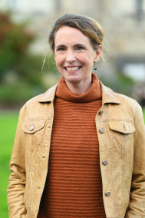
Jennifer Knust is a scholar of religion who specializes in early Christian history and the religions of the ancient Mediterranean. Author of To Cast the First Stone: The Transmission of a Gospel Story (with Tommy Wasserman, Princeton 2018), Unprotected Texts: The Bible’s Surprising Contradictions about Sex and Desire (HarperONE 2011), and Abandoned to Lust: Sexual Slander and Ancient Christianity (Columbia 2005), she studies early Christian texts, their contexts, and their receptions from multiple angles, with a particular focus on rhetoric and gendered discourse. Her numerous articles, book chapters, and edited books address the materiality of texts, the intersection of Christian practices with other ancient religions, and the ethics of interpretation in ancient as well as contemporary contexts.
Artist in Residence
Jen Sturrock
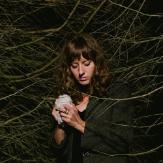
Joining the PSU project as the 'artist in residence', Jennifer is a multidisciplinary artist who integrates textiles, fashion and poetry. Currently doing a PhD in 'Theology Through Creative Practice' at Glasgow University, she previously studied at Chelsea College of Art and London College of Fashion, before gaining a Masters in Theology & the Arts from Kings College London, majoring in the ‘Idea of Beauty in Western Theology'.
Formerly Senior Producer of Residencies at the V&A Museum and more recently textile designer for a London-based couture house, she has presented at and worked with a range of organisations (including the RSA, Courtauld Institute, St Paul's Cathedral and University of the Arts London). Her poetry publication, 'Pulling Threads' (April, 2020) has been acquired by the National Poetry Library’s permanent collection in London, as well as the Scottish Poetry Library in Edinburgh. | www.jennifersturrock.com | @jensturrock |
Project Administrator
Dr John Reed Spiers

Dr Spiers is the administrator on the Paratexts Seeking Understanding research project. He recently obtained his PhD in Literature, Theology & the Arts from the University of Glasgow, and holds a master’s degree from the Centre for Research in Modern European Philosophy at Kingston University. His doctoral thesis, Jean Améry: At Existentialism’s Limits, engaged with existential themes in Améry’s essayistic writings, and he has written on Schopenhauer, Nietzsche, Dostoevsky, Shestov, Fondane, Beauvoir, Sartre, and Camus.

